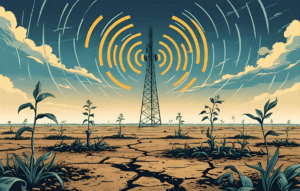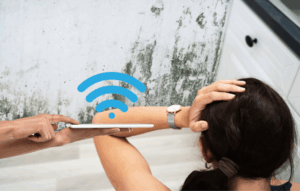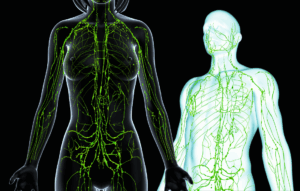In recent years, “Havana Syndrome” has emerged as a perplexing and distressing condition affecting U.S. government personnel and their families stationed abroad. This phenomenon, first reported in Havana, Cuba, in late 2016, has since spread to various locations, sparking a wave of investigations, theories, and debates. As of 2024, the condition continues to baffle scientists, medical professionals, and policymakers. This article delves into the recent surge in Havana Syndrome cases, explores potential connections to electromagnetic radiation or frequency alteration, and examines the latest findings and ongoing research efforts.
Understanding Havana Syndrome
Havana Syndrome refers to a set of unexplained symptoms experienced by U.S. diplomats, intelligence officers, and military personnel stationed in foreign countries. The symptoms include hearing strange noises, experiencing head pressure, headaches, dizziness, cognitive dysfunction, and a host of other neurological issues. These incidents, known as anomalous health incidents (AHIs), have caused significant disruption in the lives of those affected and have led to numerous theories about their origin.
Key Events and Reports
Initial Reports in Havana (2016-2017): The first known cases of Havana Syndrome emerged in late 2016 when U.S. diplomats in Havana, Cuba, reported hearing strange sounds and experiencing a range of symptoms. Affected individuals described hearing a high-pitched noise, feeling pressure in their heads, and then developing headaches, dizziness, and cognitive issues. The U.S. government initially suspected a sonic attack, leading to a reduction in embassy staff and heightened diplomatic tensions with Cuba.
Expansion to Other Countries (2018-Present): Since the initial reports in Havana, cases have been reported in China, Russia, Austria, Germany, and other countries. In 2020, several U.S. diplomats and intelligence officers in China reported similar symptoms, prompting the evacuation of personnel and their families. By 2021, incidents were being reported in Europe, including in U.S. embassies in Vienna and Berlin.
Recent Surge in Cases (2022-2024): The past two years have seen a notable increase in reported cases, with incidents occurring in various parts of the world. In 2023, the U.S. Department of State confirmed over 200 cases of Havana Syndrome among U.S. personnel. The rise in cases has led to renewed investigations and intensified efforts to uncover the cause of these mysterious symptoms.
NIH Findings and Ongoing Research
In a study conducted by the National Institutes of Health (NIH), researchers aimed to identify potential causes and effects of Havana Syndrome. The study, which spanned nearly five years, involved advanced imaging techniques and in-depth clinical assessments of over 80 U.S. government employees and their adult family members who had reported AHIs.
Key Findings from the NIH Study
No MRI-Detectable Brain Injury: The NIH study found no significant evidence of MRI-detectable brain injury among participants who reported AHIs. Researchers used multiple imaging techniques to investigate brain volume, structure, and function but were unable to identify consistent abnormalities compared to healthy controls.
Self-Reported Symptoms: Participants with AHIs reported significantly increased symptoms of fatigue, post-traumatic stress, and depression compared to controls. A substantial portion of the AHI group met the criteria for functional neurological disorders (FNDs) and persistent postural-perceptual dizziness (PPPD).
Lack of Persistent Pathophysiologic Changes: The study concluded that if symptoms were caused by an external phenomenon, it did not produce persistent or detectable pathophysiologic changes. Researchers noted that the physiologic markers of an external phenomenon might no longer be detectable or could not be identified with current methodologies.
Implications and Limitations
Dr. Leighton Chan, the lead author of one of the papers published in JAMA, emphasized that while no significant differences were identified, the symptoms experienced by those affected are very real and can be prolonged and disabling. Dr. Carlo Pierpaoli, the lead author of the neuroimaging paper, acknowledged the possibility that an adverse event impacted the brain but did not produce the long-term changes typically observed after severe trauma or stroke.
Theories and Speculations
The lack of conclusive evidence from the NIH study has not deterred the pursuit of potential explanations for Havana Syndrome. Several theories have been proposed, ranging from sonic attacks to psychological factors. However, one of the most debated hypotheses involves electromagnetic radiation or frequency alteration.
Electromagnetic Radiation and Frequency Alteration
Microwave Radiation Theory: One prominent theory suggests that microwave radiation could be responsible for the symptoms experienced by those affected by Havana Syndrome. In 2018, a report by the National Academies of Sciences, Engineering, and Medicine (NASEM) concluded that “directed, pulsed radio frequency energy” could plausibly explain some of the symptoms reported by U.S. personnel.
Potential Mechanisms: Proponents of the microwave radiation theory argue that directed energy weapons could potentially cause the types of symptoms described by affected individuals. This theory posits that microwave radiation could disrupt cellular processes in the brain, leading to symptoms such as dizziness, headaches, and cognitive dysfunction.
Challenges and Criticisms: Critics of the microwave radiation theory point out the lack of concrete evidence linking such attacks to the reported symptoms. The NIH study’s findings, which did not identify MRI-detectable brain injuries or consistent biomarkers, further complicate efforts to validate this theory.
In this 60 Minutes feature, various experts and affected individuals discuss the prevailing theory that Russia, and potentially China, might be behind Havana Syndrome, leveraging their advanced radiowave science and technology, a field Russia has excelled in since the Cold War era. While these perspectives are compelling, I remain cautious about casting blame without definitive evidence. This video offers an interesting viewpoint, but I believe in exploring all angles and continuing to weigh different possibilities as new information emerges. Let’s keep an open mind and delve into the various theories surrounding Havana Syndrome.
The Declassified Report and New Insights
A newly declassified report by a panel of experts has brought additional insights into the potential causes of Havana Syndrome. This report, prepared for the Director of National Intelligence, has stirred further debate by suggesting that the condition could be the result of an unknown weapon.
Key Points from the Declassified Report
Non-Natural Phenomenon: The report concluded that Havana Syndrome is not a naturally occurring health phenomenon, indicating that the symptoms could be due to external stimuli. It emphasized that some cases cannot be easily explained by known environmental or medical conditions.
Electromagnetic Energy as a Plausible Cause: The report highlighted that electromagnetic energy, particularly pulsed signals in the radiofrequency range, could plausibly explain the core characteristics of Havana Syndrome. It noted that while information gaps exist, sources capable of generating the required stimuli are concealable and have moderate power requirements.
Contrasting Conclusions: Interestingly, the declassified report contrasts with an earlier conclusion by the U.S. intelligence community, which suggested that the health incidents were unlikely the result of interference by a foreign government. This discrepancy underscores the complexity and ongoing uncertainty surrounding Havana Syndrome.
Growing Confidence in Directed-Energy Attacks
The U.S. government’s investigation into the mysterious illnesses impacting American personnel overseas and at home is turning up new evidence that the symptoms are the result of directed-energy attacks. According to one Politico article by Andrew Desiderio, U.S. investigators are increasingly confident in this theory.
Key Developments from Politico Report
Increased Government Focus: The National Security Council has been convening more frequent high-level meetings on Havana Syndrome, indicating that the government’s review is accelerating. High-level attention includes CIA Director William Burns tapping an officer who aided the Osama bin Laden manhunt to lead the agency’s investigation.
Directed-Energy Attacks: Lawmakers briefed on the matter are growing increasingly confident that Russia or another hostile foreign government is behind the suspected directed-energy attacks. The investigation continues to buttress a December 2020 report by the National Academy of Sciences, which concluded that “directed, pulsed radio frequency energy” is the most plausible explanation for the incidents.
High-Profile Incidents: Notable incidents include Vice President Kamala Harris’ August trip from Singapore to Vietnam being delayed when multiple U.S. personnel reported symptoms consistent with Havana Syndrome in Hanoi. In September, a member of Burns’ team reported similar symptoms and required medical attention during the director’s trip to India.
Legislative and Policy Responses
Sen. Susan Collins (R-Maine) and Senate Intelligence Vice Chair Marco Rubio (R-Fla.) have been leading the push for answers on Capitol Hill. Both lawmakers emphasize the seriousness of the issue and the need for a comprehensive investigation.
Legislative Action: President Joe Biden signed a bill to aid victims of the suspected attacks by expanding access to medical treatment. The legislation, introduced by Intelligence Committee leaders, cleared both chambers unanimously. Defense Secretary Lloyd Austin issued new guidance urging personnel who believe they have been targeted to immediately depart the area and report the incident.
Ongoing Investigations: The Intelligence Committee receives weekly updates from the intelligence community on the status of the investigation. CIA Deputy Director David Cohen stated that the intelligence community is getting closer to identifying the source of the incidents but has not yet reached specific conclusions.
Personal Reflections and Broader Implications
As someone deeply interested in the intersection of health, technology, and international relations, the saga of Havana Syndrome is both fascinating and concerning. The condition’s mysterious nature and its potential link to advanced technology like electromagnetic weapons raise important questions about the safety and well-being of those serving abroad and the population as a whole.
The Human Impact
It’s crucial to remember that behind the headlines and scientific studies are real people whose lives have been significantly disrupted by Havana Syndrome. The symptoms, whether caused by external forces or psychological factors, are very real and can be debilitating. The U.S. government’s decision to provide compensation to affected individuals, with payments ranging from $100,000 to $200,000, reflects the seriousness of the condition and the impact it has had on those affected.
The Quest for Answers
The ongoing research and investigations into Havana Syndrome highlight the challenges of understanding and addressing complex health phenomena. The NIH’s findings provide valuable insights but also illustrate the limitations of current methodologies. The declassified report adds another layer of complexity, suggesting that we may need to look beyond traditional explanations to uncover the truth.
Future Directions
Moving forward, it is essential to continue exploring all possible angles and theories related to Havana Syndrome. This includes further investigation into the potential role of electromagnetic radiation and other advanced technologies. It also means considering the psychological and sociological factors that may contribute to the condition.
The mystery of Havana Syndrome serves as a reminder of the complexities of human health and the need for ongoing research and collaboration to unravel the unknown. As new information emerges, it is crucial to maintain a balanced and open-minded approach, considering all possible angles and remaining vigilant in the pursuit of answers.
Conclusion
Havana Syndrome remains an enigmatic and troubling phenomenon that has affected the lives of many U.S. government personnel and their families. Despite extensive research and investigations, the cause of these symptoms remains elusive. The NIH’s recent findings provide important insights but also highlight the challenges of identifying a definitive explanation.
As scientists, medical professionals, and policymakers continue to explore potential causes and solutions, the affected individuals continue to grapple with the impact of this condition. Theories ranging from electromagnetic radiation to psychogenic factors are being examined, each with its own set of challenges and implications.
In the end, the story of Havana Syndrome is not just about scientific inquiry or international intrigue. It’s about the people whose lives have been turned upside down by a mysterious condition. It’s about the quest for understanding in a world where new challenges and threats can emerge without warning. And it’s about the ongoing effort to protect and support those who serve their country, often in difficult and dangerous circumstances.
For those of us following this story, Havana Syndrome is a stark reminder of the need for vigilance, compassion, and a relentless pursuit of truth. Whether the answers lie in the realm of advanced technology, psychological phenomena, or somewhere in between, the quest to unravel this mystery continues. Personally, I find it incredibly interesting and worth keeping an eye on. There’s so much we don’t know, and I don’t claim to know a thing. But what I do know is that this is a story that will continue to unfold, revealing more about the mysterious and complex world we live in.
Kyle Smith

Dead Soil, Smart Cities: The Unseen Cost of 5G Growth
As the world races toward hyperconnectivity with 5G networks and smart everything, one silent casualty continues to go unnoticed — the soil beneath our feet. While most conversations about electromagnetic radiation (EMR) focus on human health or biodiversity loss, emerging research indicates that our planet’s most fundamental ecosystem, soil, is

Best Tips To Avoid Gut Damage From Dishwashers
Your gut isn’t just a food tube. It’s a highly sophisticated organ with an immune army, hormonal communication network, and detox channel all rolled into one. At the center of this network is the gut epithelial barrier—a single layer of tightly packed cells that selectively absorbs nutrients while keeping harmful

How to Beat Mold Illness in an EMF-Saturated World
Imagine your body like a bucket. Every day, it fills up with little bits of toxic exposure—from the air you breathe, the food you eat, and yes, even the invisible waves from your devices. This accumulation is referred to as your total toxic burden. If your body’s natural detox systems

Unlocking The Truth: Air Pollution and Kid’s Brain Growth
A recent study out of Spain, published in The Lancet Planetary Health, should make all of us take a deep breath—and think twice about the air we’re breathing. Researchers from the Barcelona Institute for Global Health examined 754 mother-fetus pairs and found something troubling: exposure to common air pollutants like









